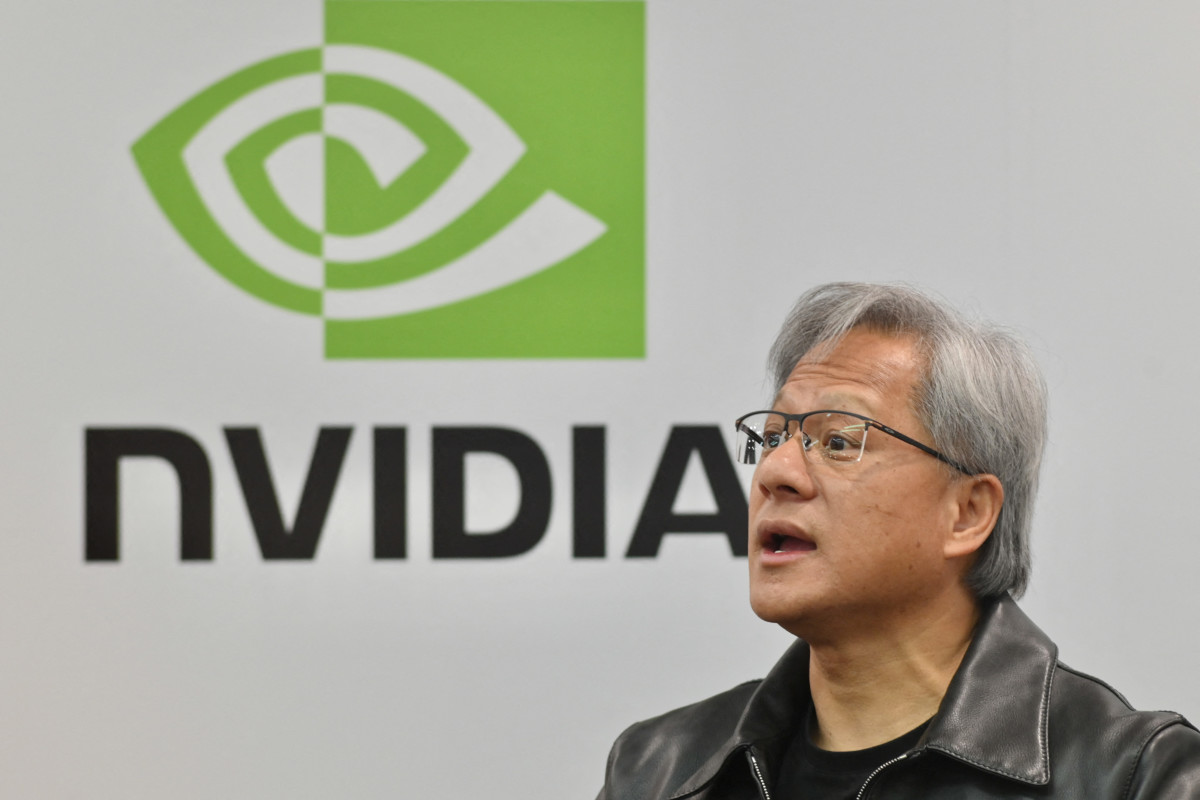
Nvidia is slated to report its highly anticipated second quarter earnings after the close of trading Wednesday, with investors looking for the AI-chip maker to consolidate the market's hard-won August gains and set the stage for a extended autumn rally.
Having added more than $1.2 trillion in market value so far this year, Nvidia (NVDA) has powered more than a third of the Nasdaq 100's year-to-date advance and emerged as the undisputed barometer for artificial-intelligence demand thanks to its commanding market share in AI chips and processors.
Nvidia is also the second-heaviest weight on the S&P 500, and with a market value of $3.2 trillion, and could swing by as much as $300 billion, the largest post-earnings move on record, when it starts trading Thursday.
Related: Nvidia earnings top forecast, but Blackwell delay signal hits stock
Below are five key issues investors are likely to focus on heading into and, crucially, out of Nvidia's earnings report.

1. Earnings forecast
Nvidia is forecast to post a bottom line of 65 cents a share for the three months ended in July, the chipmaker's fiscal second quarter, a tally that would be a 140% improvement from the same period last year.
Group revenues, meanwhile, are forecast to rise 114% from a year earlier to $28.9 billion, with Nvidia's data center leading the way with a top line tally of $25.1 billion.
The remaining revenue generators will come from Nvidia gaming division, which is forecast to rise 12% to $2.6 billion, as well as its automotive, professional visual and 'other' segments.
Related: Analyst updates Nvidia stock price target with Q2 earnings in focus
Gross margins, which have improved by around 10 percentage points over the past year, are expected to narrow modestly, to around 75.5%, as spending on new products and systems continues to ramp.
"Nvidia's upcoming earnings report on Wednesday is poised to be a critical event for the markets, given the company's central role in the AI boom and its remarkable 150% rise in share price year-to-date," said Lukman Otunuga, a senior markets analyst at forex trading broker FXTM.
"A strong earnings report could drive markets to new highs, while any sign of weakness might trigger a notable pullback, making Nvidia's performance a potential market mover this week," he added.
2. Near-term outlook
Nvidia's near-term outlook will be crucial for the stock's autumn performance as investors question the veracity of AI-spending plans from hyperscalers such as Amazon (AMZN) , Facebook parent Meta Platforms META, Google parent Alphabet (GOOGL) and Microsoft (MSFT) , all of which are major Nvidia customers.
Analysts expect Nvidia to forecast current-quarter revenue in the region of $31.7 billion, a level that would imply 72% growth from the year-earlier period. Earnings are expected to improve to 71 cents a share.
Related: Nvidia earnings key to market rally after Fed lays rate cards on table
For Nvidia's fiscal year, which ends in January, analyst are looking for revenue in the region of $121.63 billion, double the $60.92 billion it booked over the prior 12-month period.
"We continue to estimate for every $1 spent on an Nvidia GPU chip there is a $8 to $10 multiplier across the tech sector, which speaks to our firmly bullish view of tech stocks over the next year," said Wedbush analyst Dan Ives.
"While investors may fret about this massive spending wave and frustrated that top-line growth/margins from these investments could take time to materialize, this ultimately speaks to our view [that] this is a 1995 (almost 1996) start of the Internet Moment and not a 1999 Tech Bubble-like moment."
3. Blackwell chip delays
Likely the biggest topic of conversation on the post-earnings conference call will be the delivery schedule for Nvidia's new Blackwell line, which offers customers a full rack of chips and processors that perform at higher speed and efficiency in AI functions, while consuming less energy.
Reports over the summer have suggest that design flaws, as well as supply-chain snarls, have pushed out delivery of the new Blackwell systems until later in the year, a move that could have consequences for its current-year revenue generation.
Related: Analyst revisits Nvidia stock price target after Blackwell checks
Nvidia CEO Jensen Huang will likely speak to those reports, as well as to concern that customers may opt to wait for the new Blackwell line and scrub existing orders for the group's H100 Hopper chips.
KeyBanc Capital Markets analyst John Vinh argues, however, that "modest expectations for Blackwell shipments in the third quarter have been backfilled with higher Hopper bookings." He adds that "most of the demand and upside will be H100-driven" over the three months ending in October
4. Rubin system launch
Huang has told investors that Nvidia plans to update its AI accelerators each and every year, as it aims to cement its position as the key provider of AI-powering technologies in
"Our basic philosophy is very simple: build the entire data-center scale, disaggregate and sell to you parts on a one-year rhythm, and push everything to technology limits,” Huang told an event in Taiwan earlier this spring.
At that same event, Huang unveiled plans for a new family of chips and processors called Rubin. Named after the American astronomer Vera Rubin, who is credited for discovering so-called dark matter, the new Rubin systems will be rolled out in 2026, Huang said.
Related: Analyst resets Nvidia stock price target as CEO unveils new AI platform
The new system, which will include next-generation high-bandwidth memory chips known as HBM4, will be made by Taiwan Semiconductor (TSM) using so-called 3nm technology, which allows for the packing of more transistors into a given area.
Beyond those broad strokes, Huang didn't offer much detail on the Rubin system, nor its likely upgrade, Rubin Ultra, and investors will be keen to hear what Nvidia has planned for the 2026 launch.
5. China restrictions
U.S. restrictions on the export of high-end chips to China, which were tightened last year by the Commerce Department, remain one of the few notable headwinds to Nvidia's near-term growth story.
Finance chief Colette Kress told investors in May that "our data center revenue in China is down significantly from the level prior to the imposition of the new export control restrictions in October."
But she added that "we expect the market in China to remain very competitive going forward" as it ramps up the design of new products that don't require an export control license.
China sales, prior to the Commerce Department restrictions, comprised between 20% and 25% of Nvidia's overall revenues. China accounted for around $10.4 billion in overall revenue for Nvidia last year.
Related: Big names exit Nvidia stock as AI giant stumbles before earnings
Nvidia has developed a step-down version of its Hopper processors, the H20, that will be sold to China-based customers and reportedly last month approved the use of Samsung Electronics' (SSNGY) HBM3 chips in its systems.
Reuters also reported last month that Nvidia is working on a version of its B200 chip, which is part of its new Blackwell series, that it can sell to China-based customers without falling afoul of U.S. regulations.
Related: Veteran fund manager sees world of pain coming for stocks







